Mango and Orange Pi go Five by Five
Recently, two new SBCs sharing an uncommon form factor appeared: The Orange Pi Zero 3 and an as-yet-unnamed MangoPi RISC V router board. The 5 x 5 cm form factor isn't new, and the last two generations of Orange Pi Zero used it, but the fact that MangoPi is adopting it too makes us wonder: is 5 x 5 going be showing up more often?
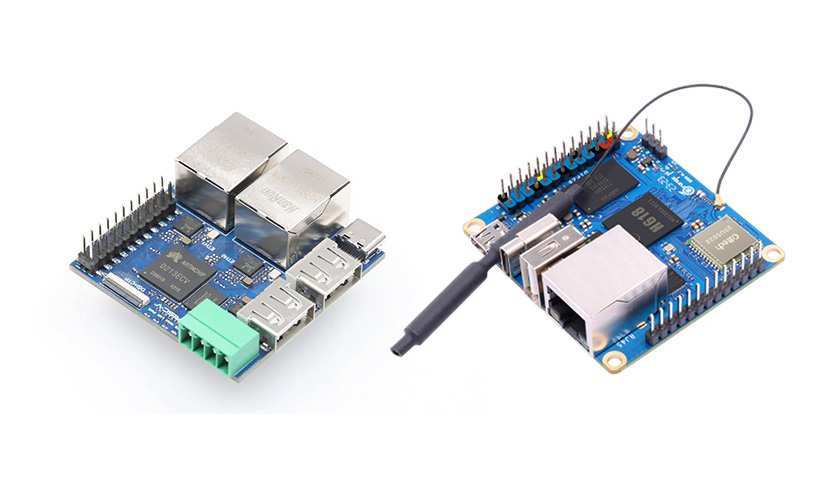
Well, we have no idea, but both boards look very cool indeed. Let's start with the new Orange Pi Zero 3.
Orange Pi Zero 3: Still Small, Bigger Capabilities
Thus far, the Orange Pi Zero boards have been a small form factor, low power draw Linux-based SBCs. For the most part, they've also been very underpowered for a lot of tasks, but given their price and ability to output video, they've been a great choice for simple kiosks, small servers, and home hobby uses. We talked about it on this week's Electromaker YouTube Show:
The latest iteration is the third in the Zero line and is unsurprisingly named the Zero 3. It retains its small form factor and low price but sees significant upgrades across the board in terms of processing power and graphical output.
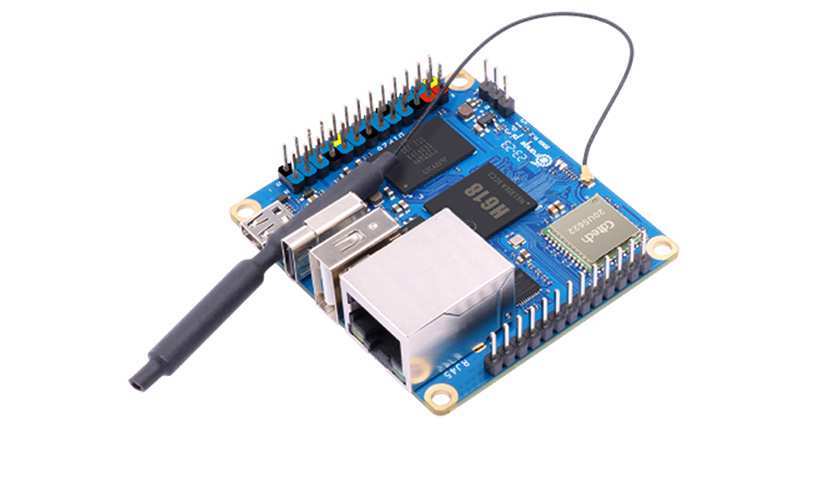
The Orange Pi Zero 3 boasts an Allwinner H618 quad-core Cortex-A53 processor with a powerful Arm Mali-G31 MP2 GPU, enabling support for OpenGL ES 1.0/2.0/3.2, OpenCL 2.0, Vulkan 1.1, and more. Available in 1GB, 1.5GB, 2GB, and 4GB LPDDR4 memory options, it offers impressive video decoding capabilities for multiple formats and features a Micro-HDMI output that supports 4K display.
It also includes a single Gigabit LAN port, WiFi 5, and Bluetooth 5.0 for seamless connectivity. Additional expansion ports include USB2.0, Type-C power supply, and two pin headers - one 26-pin header and a further 13-pin expansion on the other side of the board.
The Orange Pi Zero 3: In Specifications
Orange Pi give a useful comparison table on the Zero 3 shop page showing the changes between generations:
| Model | Orange Pi Zero 2 | Orange Pi Zero 3 |
|---|---|---|
| SOC | Allwinner H616 64bit | Allwinner H618 64bit |
| CPU architecture | Cortex-A53 | Cortex-A53 |
| CPU frequency | 1.5GHz | 1.5GHz |
| Onboard Storage | • MicroSD card • 2MB SPI Flash |
• MicroSD card • 16MB SPI Flash |
| Core number | 4 | 4 |
| Memory bus | DDR3 | LPDDR4 |
| Memory | 512MB/1GB | 1GB/1.5GB/2GB/4GB |
| WiFi | WiFi 5 | WiFi 5 |
| BT | BT5.0 | BT5.0 |
| Network | 10M/100M/1000M Ethernet | 10M/100M/1000M Ethernet |
| USB | USB2.0 | USB2.0 |
| HDMI OUT | Micro HDMI | Micro HDMI |
| PCB size | 53x60mm | 50x55mm |
| Power interface | Type-C | Type-C |
| PMU | Yes | Yes |
| OS | Android10, Ubuntu, Debian | Android 12 TV,Debian11/12,Ubuntu22.04/20.04 |
While OrangePi has created a whole range of different Raspberry Pi clones over the years, which is what makes the Zero range so interesting. It's form factor and general capabilities differ from the Pi Zero in ways that make it unique.
The new power makes it a great candidate to make a custom TV box or display, and while it's not going up against dedicated server SBCs, it'd be a great small form factor addition to any home lab!
A couple of purchase links are available for a couple of variants of the board, but at the time of writing, it's only in stock on Aliexpress for €28.
MangoPi Pioneer the RISC-V Router
The MangoPi RISC-V Router Board features the same form factor as the Orange Zero 3 and is designed explicitly for router applications. From the image, we can see that it comes equipped with two Ethernet ports, allowing for efficient network connectivity and data transfer. Additionally, it includes an RS-485 communication port, which enables robust serial data communication over long distances. We also discussed this mysterious new board in the Electromaker Show:

Further, the board is equipped with two USB 2.0 ports for peripheral connectivity and a USB Power Delivery Port for efficient power management. To facilitate expandability and customization, MangoPi has incorporated a GPIO expansion header on the board. Although the information provided is limited, the presence of open-source hardware components indicates exciting possibilities for developers and makers.
What's Missing: Availability and Pricing
While the MangoPi RISC-V Router Board holds tremendous promise, critical details such as its availability and pricing remain undisclosed. As enthusiasts eagerly await more information, it is essential to stay tuned for updates from the MangoPi team.
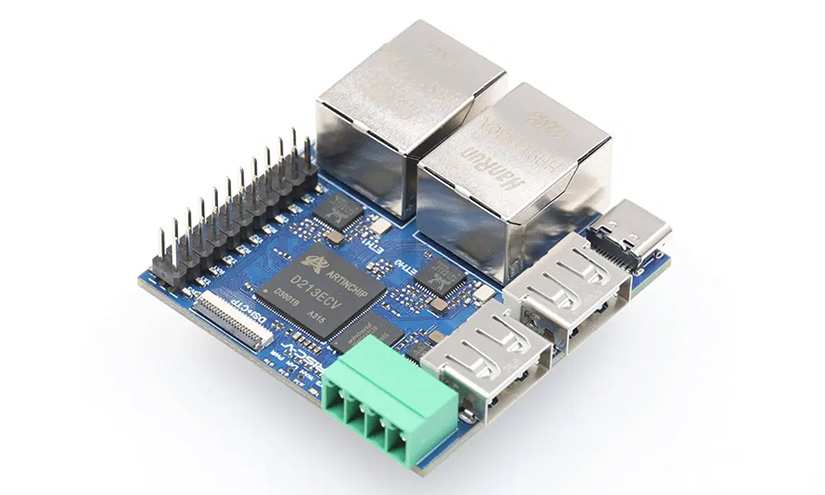
MangoPi has revealed various stats about the new board on Twitter, and CNX Software usefully gathered them together in their article covering the new board. I strongly recommend reading it for a little more detail and insight on the new hardware!
| Feature | Specifications |
|---|---|
| SoC | ArtInChip D213ECV 64-bit RISC-V (RV64IMAFDC) processor |
| System Memory | 128MB 16-bit DDR3 @ 672 MHz (SiP) |
| Storage | 256MB (2Gbit) SPI NAND flash (Winbond 25N02KVZEIR) microSD card slot (bottom side of the board) |
| Networking | 2x Gigabit Ethernet RJ45 ports via Realtek RTL8211F transceiver |
| Display | FPC connector for MIPI DSI and capacitive touch |
| USB | 2x USB 2.0 ports |
| Serial | 2x CAN 2.0 interfaces via terminal block 2-pin header for RS485 (MAX13487EESA) |
| Debugging | 3-pin UART header for serial console |
| Expansion | 22-pin header with GPIOs, UART, SPI, ADC, 5V, 3.3V, and GND |
| Misc | Reset and Boot buttons; 4x LEDs for Power, System, WAN, and LAN |
| Power Supply | 5V via USB Type-C port |
| Dimensions | 5 x 5cm |
Leveraging RISC-V for Enhanced Security
One standout feature of the MangoPi RISC-V Router Board is its utilization of the RISC-V instruction set architecture. RISC-V is an open-source instruction set that allows users to design custom processors tailored to their specific needs. This freedom in designing processors from scratch fosters a deep understanding of the hardware and its security implications, offering a level of transparency and control that is unparalleled in proprietary architectures.
RISC-V's open-source nature empowers developers to build a processor infrastructure that aligns precisely with their security requirements. The absence of closed-source components minimizes the risk of hidden vulnerabilities and facilitates rigorous security audits. Thus, utilizing RISC-V as the processor for a router is a strategic choice, ensuring users can trust the underlying architecture that powers their network devices.
OpenWrt Support: Yep, it's a Router!
One crucial aspect for routers is the availability of a robust and adaptable operating system. The MangoPi RISC-V Router Board supports OpenWrt, a widely-used Linux distribution optimized for routers and networking devices. With OpenWrt's extensive package repository and flexible configuration, users can customize their routers according to their specific needs. This combination of RISC-V's open-source processor architecture and OpenWrt's versatile operating system makes the MangoPi RISC-V Router Board a potent platform for networking enthusiasts.
Five by Five: The New Form Factor?
While that is clearly a silly thing to say - no one form factor is better than any other, it's interesting to see these two contrasting but similar Linux SBCs arrive on the scene. Out of the two, the MangoPi RISC-V Router Board is perhaps the most interesting as it's the first of its kind. For information on both boards, you can head to either the Orange Pi Zero 3 splash page, or the MangoPi website - though in the case of the latter, you may have more luck with their Twitter account!










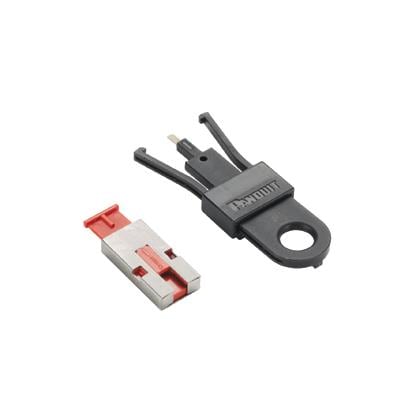








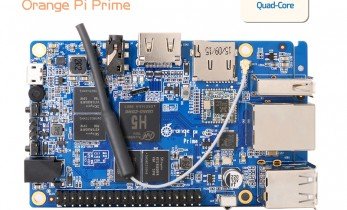
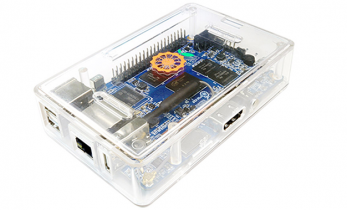





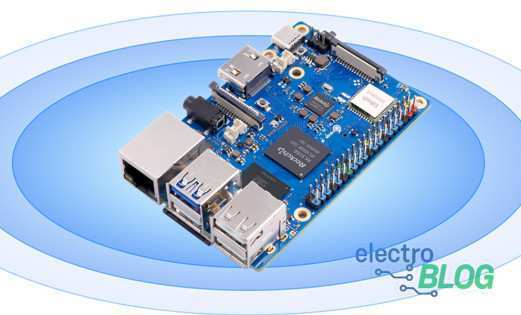
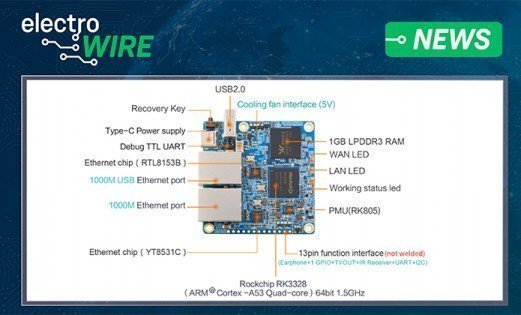


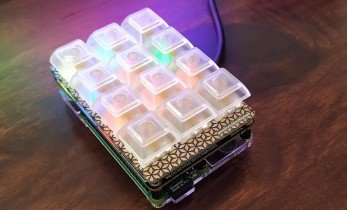
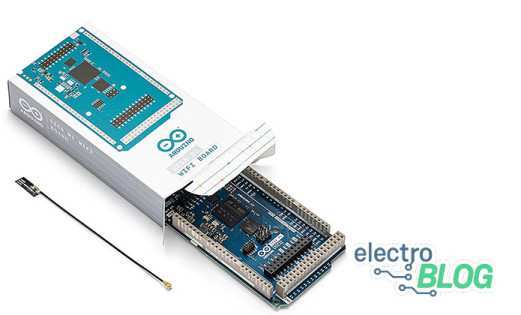



Leave your feedback...